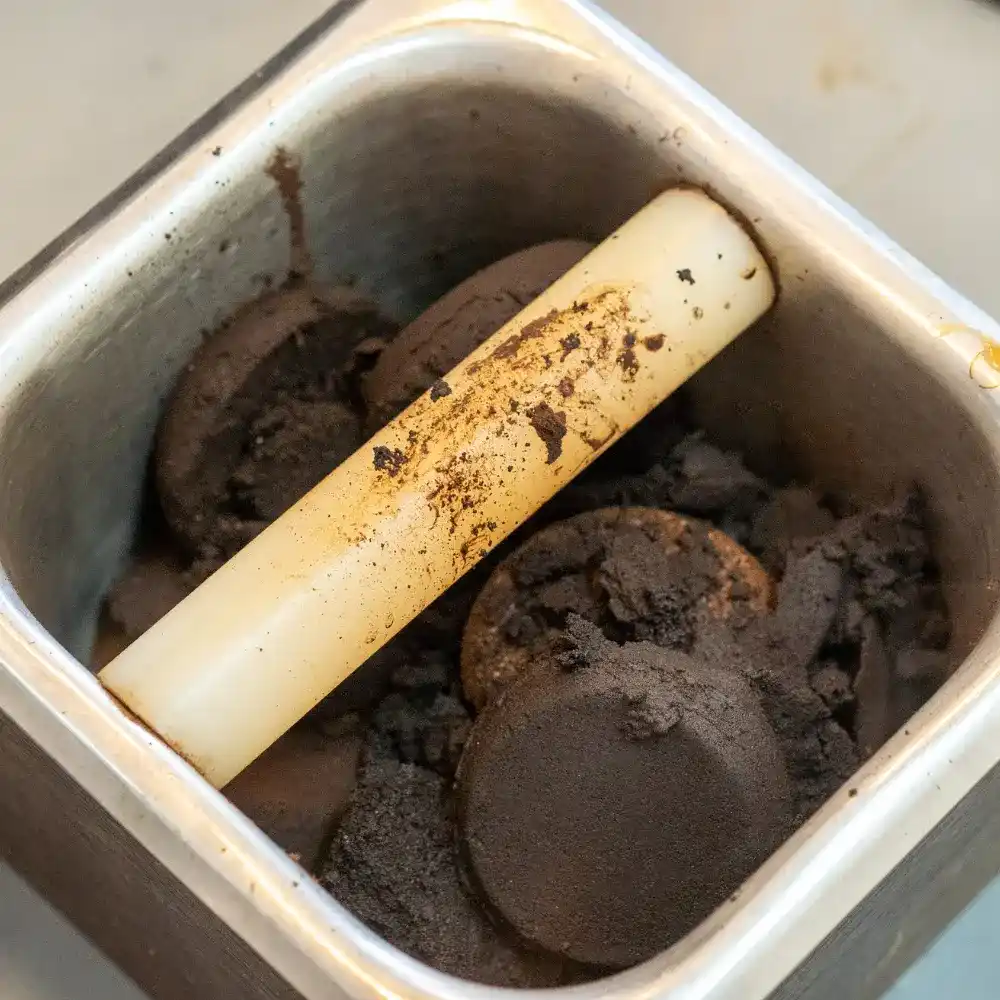A piping hot cup of joe is often the go-to source of instant energy for many people around the globe. As we savor its robust taste and soak in its invigorating aroma, have we ever paused to ponder about the journey of caffeine – the lifeline of our beloved brew – inside that cup? More specifically, the query “does coffee lose caffeine over time” has intrigued coffee aficionados and scientists alike, spawning various theories and conjectures.
In this comprehensive examination, we turn our attention towards unpacking the truths and myths surrounding caffeine retention in this lovely beverage. We will address the core question about whether your cup of java does indeed lose its kick over time, while also venturing into the territory of expired coffee grounds.
Stay with us as we percolate these pressing queries, promising to decode the secret journey of caffeine in your cup of joe. We aim to keep your knowledge as fresh as your morning cup of Joe, unveiling facts and debunking misconceptions along the way. Brew yourself a cup and let’s begin this enlightening journey.
Does Coffee Lose Caffeine Over Time? – Key Takeaway
- Stability of Caffeine: Despite common misconceptions, this delectable beverage does not lose caffeine over time. The caffeine content remains consistent, whether in whole beans, ground coffee, or a brewed cup.
- Origins Matter: The origin and variety of the bean have a significant impact on its caffeine levels. Robusta beans, for example, contain almost twice as much caffeine as their Arabica counterparts.
- Influence of Brewing Techniques: The way you brew your cup of joe, including factors such as brewing temperature, coffee-to-water ratio, and brewing equipment, can influence the caffeine content of your cup.
- Storage and Caffeine Retention: While the method of storage won’t affect the caffeine content of your drink, proper storage conditions are critical to maintaining freshness and flavor.
- Decaffeinated ≠ Caffeine Free: Decaffeinated coffee still contains trace amounts of caffeine, typically about 2-3% of the original caffeine content. So, while it’s a lower-caffeine option, it’s not entirely caffeine-free.
Evaluating Caffeine Stability in Grounds, Beans, and Brewed Coffee
The caffeine content of this lovely drink, a vital factor for many coffee drinkers, often prompts questions about its stability over time. Whether we’re looking at whole beans, grounds, or brewed coffee, understanding how and if caffeine content changes can influence our storage habits and brewing methods.
Whole Coffee Beans
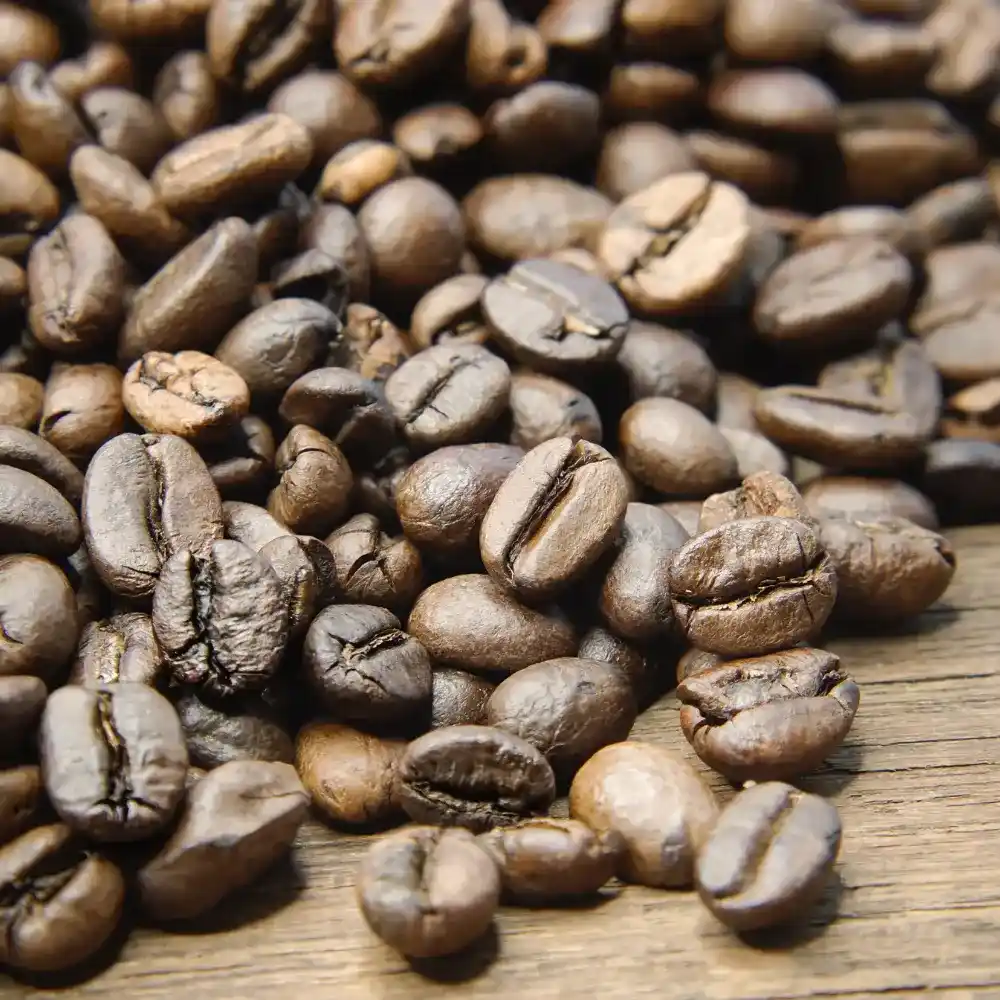
Starting with the most unprocessed form, whole beans, the stability of caffeine is high. From the moment these beans are roasted, the caffeine content remains stable.
- Caffeine Stability: Despite changes in the environment, the caffeine within whole beans remains constant. This means that whether you’ve just purchased the beans or they’ve been sitting in your kitchen for weeks, the caffeine content remains virtually the same.
Ground Coffee
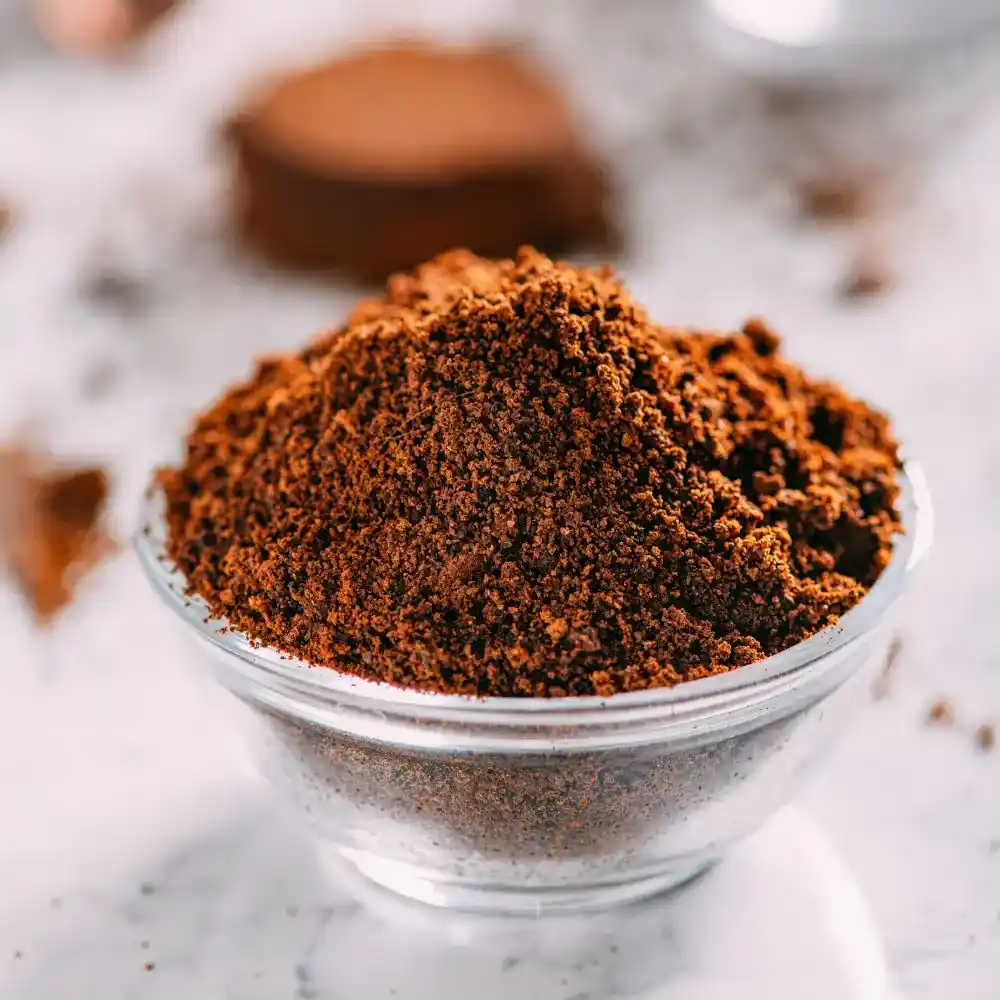
Grinding coffee increases its surface area and can impact various aspects of this drink, including flavor and aroma. But how about its caffeine content?
- Caffeine Content in Ground Coffee: The act of grinding the beans does not alter their caffeine content. However, once the coffee is ground, its increased exposure to air can cause the flavors to diminish more rapidly, which is often confused with a decrease in caffeine.
Brewed Coffee

Finally, what happens to caffeine once the coffee is brewed?
- Brewed Coffee and Caffeine: The brewing process is where the caffeine trapped within the beans is released into your cup. Different brewing methods can result in varying caffeine concentrations in the final cup, but once brewed, the caffeine content in your drink will remain consistent over time.
The caffeine content in this delightful drink, whether encapsulated within whole beans, spread across ground particles, or infused into a hot brew, retains its integrity over time. This means that even if your cup of joe has been sitting for a day or two, the caffeine’s potency will be as robust as it was at the moment of brewing.
Having established that the caffeine content in this beverage remains stable, one might wonder what factors influence the caffeine content in the first place. Let’s now turn our attention to the factors that determine the caffeine content in your cup of joe.
Factors Influencing Caffeine Content in Coffee
It’s essential to understand that the caffeine content in your beverage is influenced by several key factors. These include the coffee bean’s origin and variety, the roasting levels, and the grinding methods. Each of these elements contributes significantly to how much caffeine ends up in your cup of joe.
Coffee Bean Origin and Variety
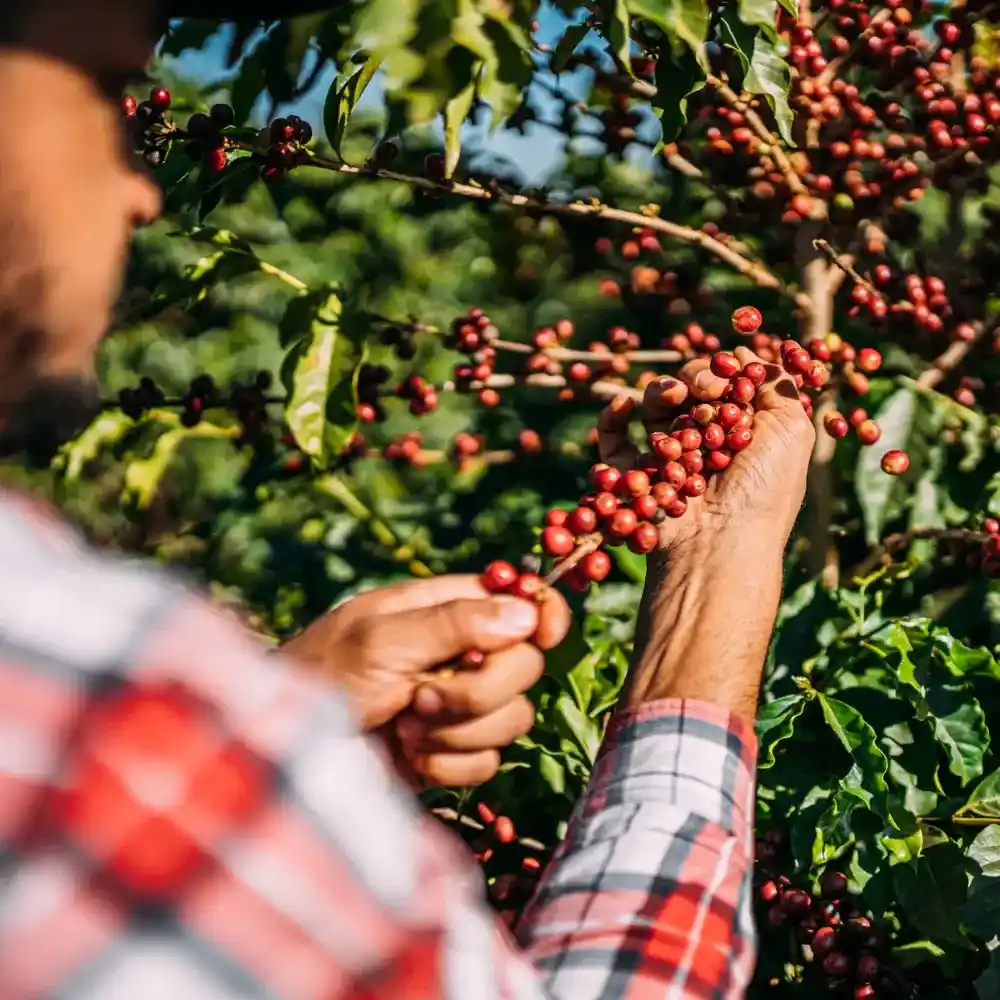
One of the pivotal factors influencing the caffeine content in your cup of joe lies in the origins of the beans themselves. Each variety of bean, cultivated across different regions of the world, inherently possesses distinct caffeine levels. Particularly, the coffee belt —a term coined for the equatorial zones ideal for coffee cultivation—houses several species. (1) Let’s take a closer look at the two most common species, Arabica and Robusta, as well as the less common Excelsa and Liberica varieties, each contributing uniquely to the caffeine equation.
- Arabica Beans: These beans are popular for their sweeter, more delicate flavor and lower acidity. However, they contain 1.5% of caffeine while Robusta beans contain 2.7%.
- Robusta Beans: Recognized for their stronger, harsher flavor and higher acidity, Robusta beans contain nearly double the amount of caffeine compared to Arabica beans.
- Excelsa Beans: Excelsa is a less common variety that contributes to only a small fraction of global coffee production. Hailing from Southeast Asia, this variety is often blended with others to enhance flavor profiles. Excelsa’s caffeine content is similar to that of Robusta, making it a high-caffeine option.
- Liberica Beans: Liberica coffee beans, also native to West Africa, are distinctive with their large size and asymmetrical shape. (2) Their caffeine content typically falls between that of Arabica and Robusta. This variety is relatively rare and primarily consumed within the Philippines.
Coffee Roasting Levels
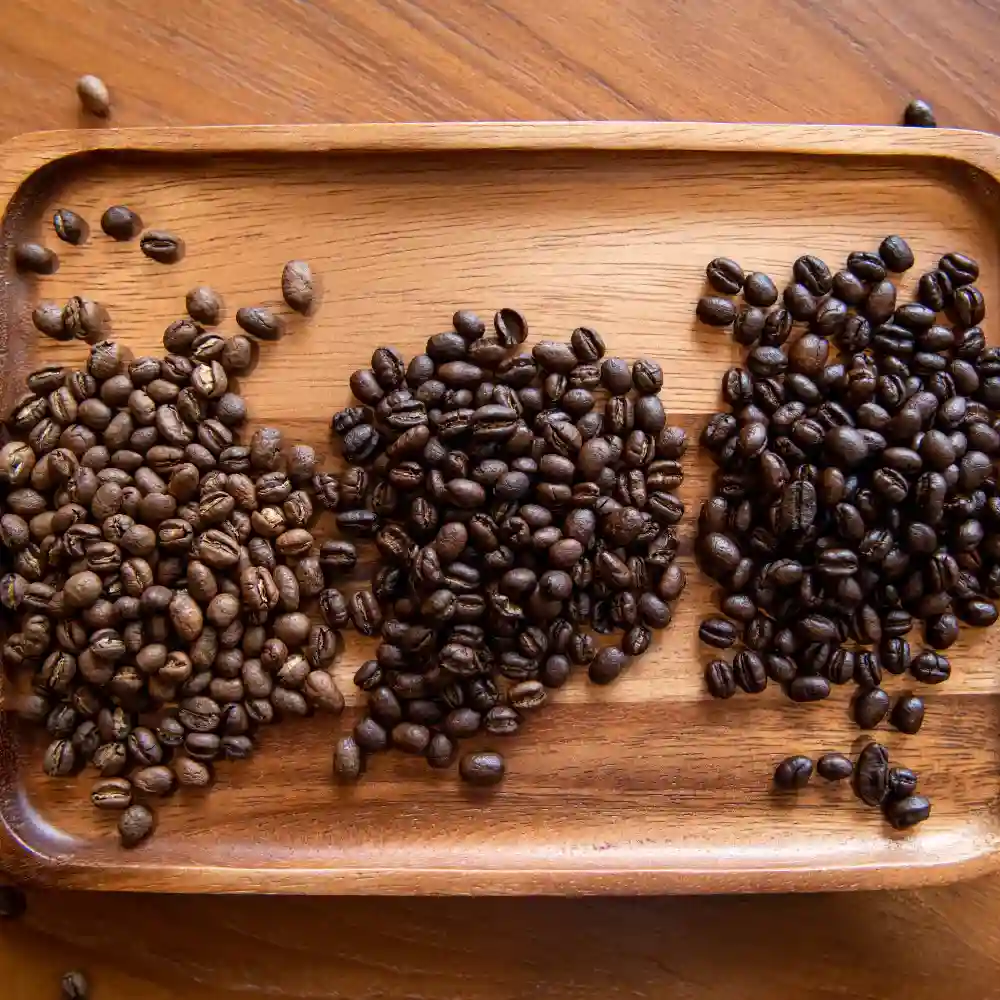
Contrary to popular belief, the roasting process does not significantly alter the bean’s caffeine content. However, it can impact the perception of caffeine potency.
- Light Roasts: Lightly roasted beans are denser and may contain slightly more caffeine by volume. Yet, they may seem weaker because the flavors are less developed.
- Medium Roasts: Striking a balance between light and dark roasts, medium roasts offer a harmonious blend of flavor and acidity, along with a medium caffeine level. In terms of caffeine, the difference is minimal compared to light and dark roasts when measured by weight, as roasting doesn’t significantly affect the caffeine content of the beans.
- Dark Roasts: Darker roasts are less dense, but due to their intense, full-bodied flavor, they often seem ‘stronger.’ Nonetheless, if measured by weight, the caffeine content between light and dark roasts is nearly identical.
Coffee Grinding Methods
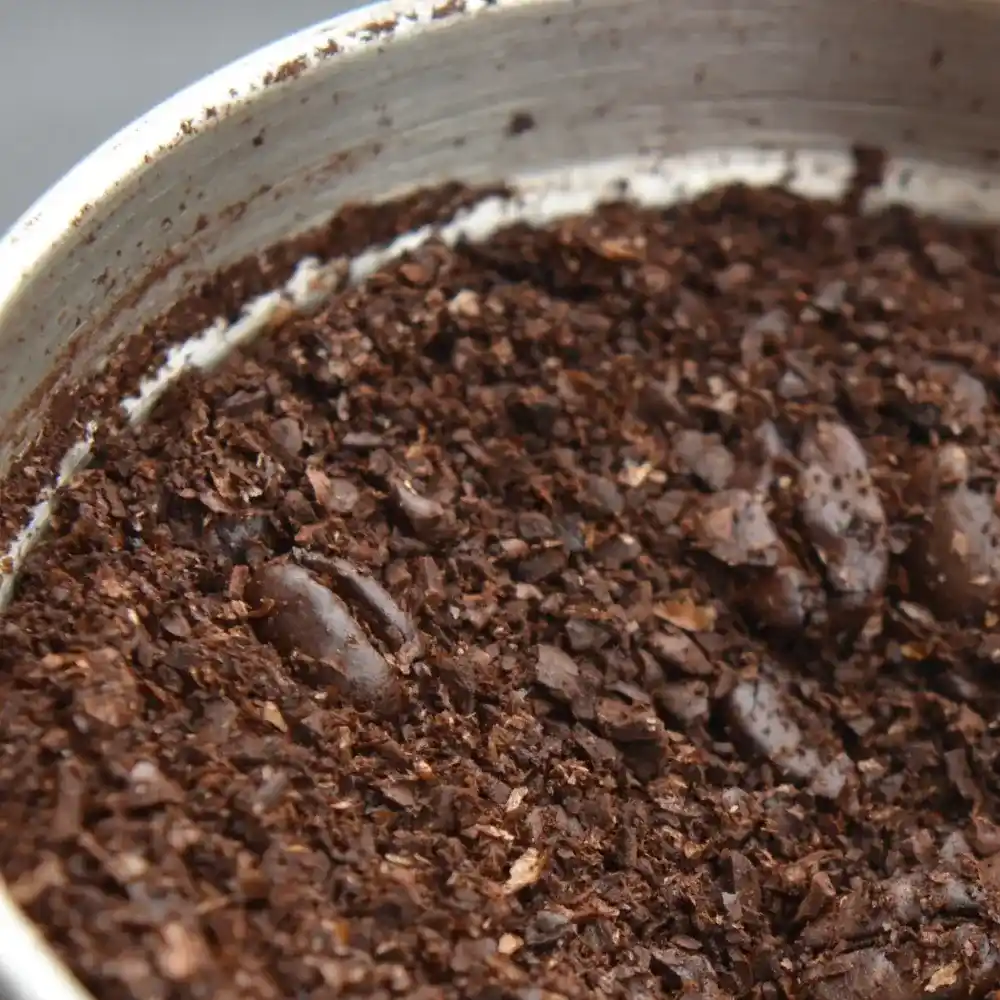
The grinding method can also affect the caffeine extraction during brewing.
- Coarse Grinds: Coarse coffee grounds lead to slower extraction times and typically result in a cup of joe with lower caffeine content.
- Medium Grinds: Medium ground coffee is the go-to grind size for most brewing methods, like drip coffee makers. They allow for a balanced extraction rate, which produces a beverage that’s neither too weak nor too strong. The caffeine content extracted from medium grinds typically falls between that of coarse and fine grinds.
- Fine Grinds: Finer coffee grounds allow for faster and more efficient extraction, potentially yielding a higher caffeine content.
Impact of Brewing Techniques on Caffeine Levels
Beyond the intrinsic characteristics of the beans and their processing, the brewing technique itself plays a significant role in the caffeine content of the final cup. Numerous variables within brewing techniques, including temperature and time, coffee-to-water ratio, and even the equipment used, can impact caffeine extraction. Let’s delve into each of these elements to understand their individual effects better.
Brewing Temperature and Time

Temperature and time are the dynamic duo of brewing, both working in tandem to dictate the extent of caffeine extraction.
- High Temperature: Brewing this beverage at higher temperatures (close to boiling) can increase the extraction rate of caffeine. However, this can also lead to over-extraction, potentially imparting a bitter taste to the brew.
- Brewing Time: Similarly, the longer the coffee grounds remain in contact with hot water, the more caffeine is extracted. However, as with temperature, extending the brewing time too much can result in over-extraction and bitterness.
Coffee-to-Water Ratio
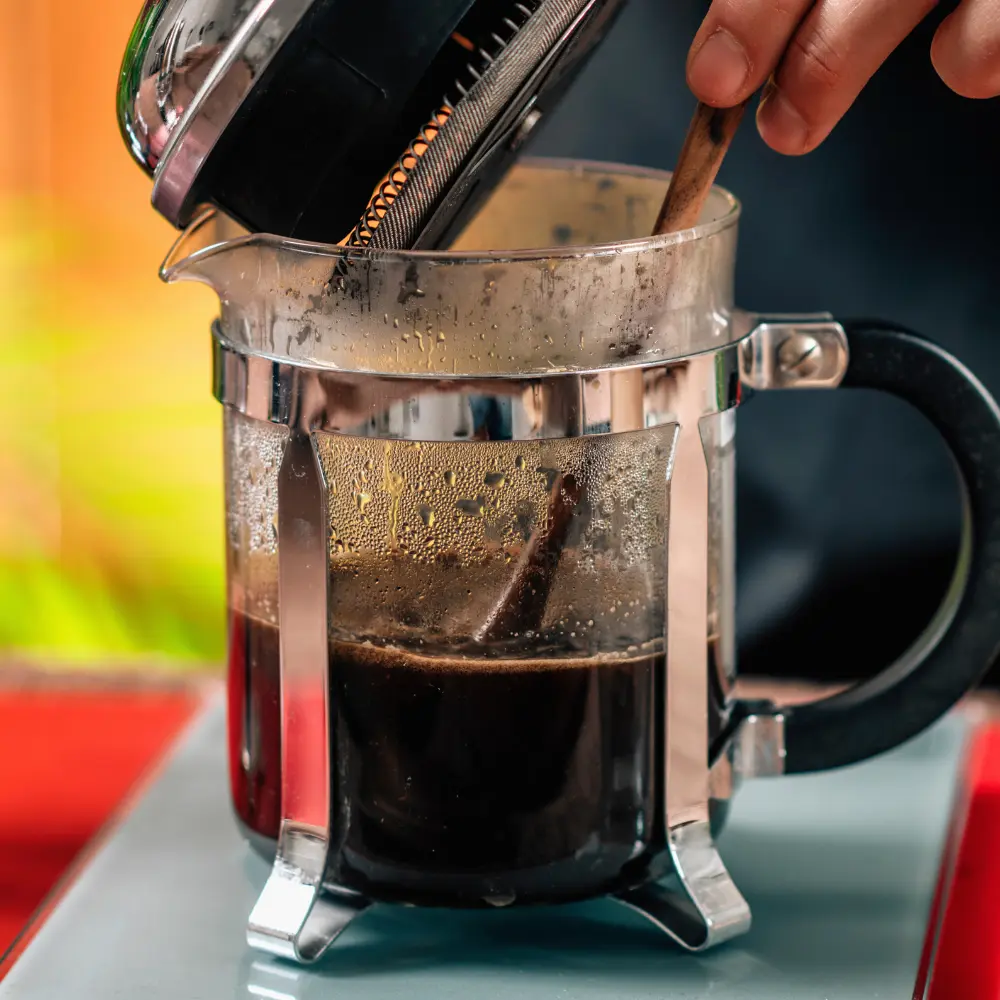
The coffee-to-water ratio is another crucial factor that directly influences caffeine levels. The more coffee used in relation to water, the stronger and more caffeinated the resulting brew will be. However, caution must be exercised here; overdoing this drink can lead to a brew that is overpoweringly strong and unpalatably bitter.
- High Ratio: Using more coffee grounds per unit of water will yield a stronger, more caffeinated coffee.
- Low Ratio: Conversely, using fewer grounds will result in a milder, less caffeinated brew.
Brewing Equipment Differences
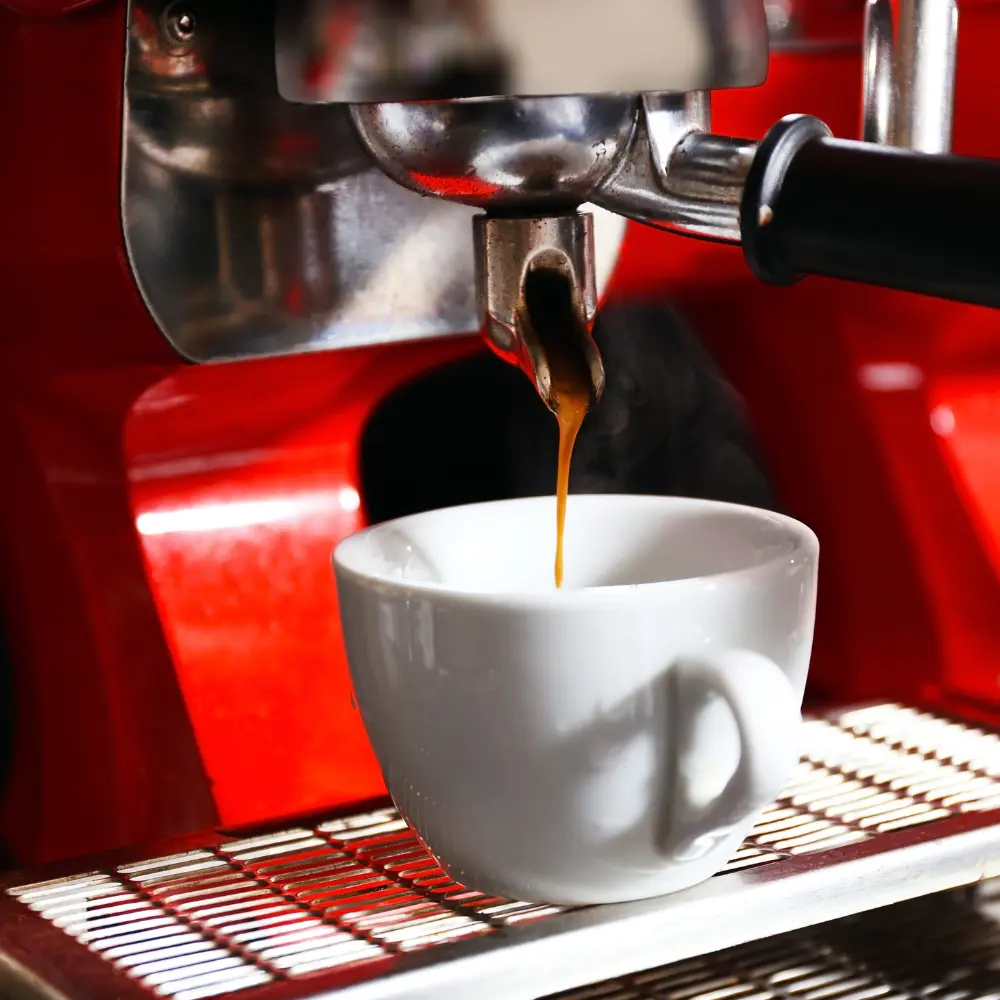
The type of brewing equipment used can also influence the caffeine content of your beverage.
- Drip Coffee Maker: Drip or filter coffee makers typically yield a cup of joe with moderate caffeine levels due to the relatively quick brewing process.
- French Press: The French press, which allows the grounds to steep in hot water for several minutes, may yield higher caffeine levels due to the longer extraction time.
- Espresso Machine: Espresso machines, which use pressure to force hot water through the grounds quickly, yield coffee with a high caffeine concentration. However, as the serving size of espresso is typically smaller, the total caffeine content may be less than other methods.
It’s important to note that expired coffee grounds will not lose their caffeine content over time. However, the flavor profiles may degrade, leading to a less satisfying cup of joe. Understanding these brewing variables can help you adjust your technique to yield the perfect cup of joe, tailored to your preferred strength and caffeine levels.
How Storage Affects Caffeine Retention in Coffee
The way we store our coffee, whether as whole beans or grounds and the conditions under which it’s kept, can have substantial implications for maintaining the caffeine content and overall quality of the beverage. Let’s examine the nuances of different storage methods and their impact on your drink’s caffeine potency.
Whole Bean vs. Ground Coffee Storage

The form in which you choose to store your coffee can influence its shelf life and quality.
- Whole Bean Coffee: Whole beans have less surface area exposed to air and environmental factors, preserving their freshness and caffeine content longer than ground coffee. For those seeking to maintain the optimal caffeine level in their beverage, storing whole beans and grinding them right before brewing is a sound strategy.
- Ground Coffee: Ground coffee, due to its higher exposure to air and environmental factors, will lose its freshness quicker than whole beans. However, the caffeine content itself remains stable, even in expired coffee grounds.
Air Exposure and Container Choices
The type of container used for coffee storage and its exposure to air also significantly impacts its quality and caffeine preservation.
- Airtight Containers: Using airtight containers for coffee storage can effectively reduce exposure to air, which could otherwise accelerate the degradation of flavors. This doesn’t affect the caffeine content but does help maintain the beverage’s overall quality.
- Opaque Containers: Opaque containers protect coffee from light, which can also contribute to the degradation of flavor compounds over time.
Optimal Storage Conditions
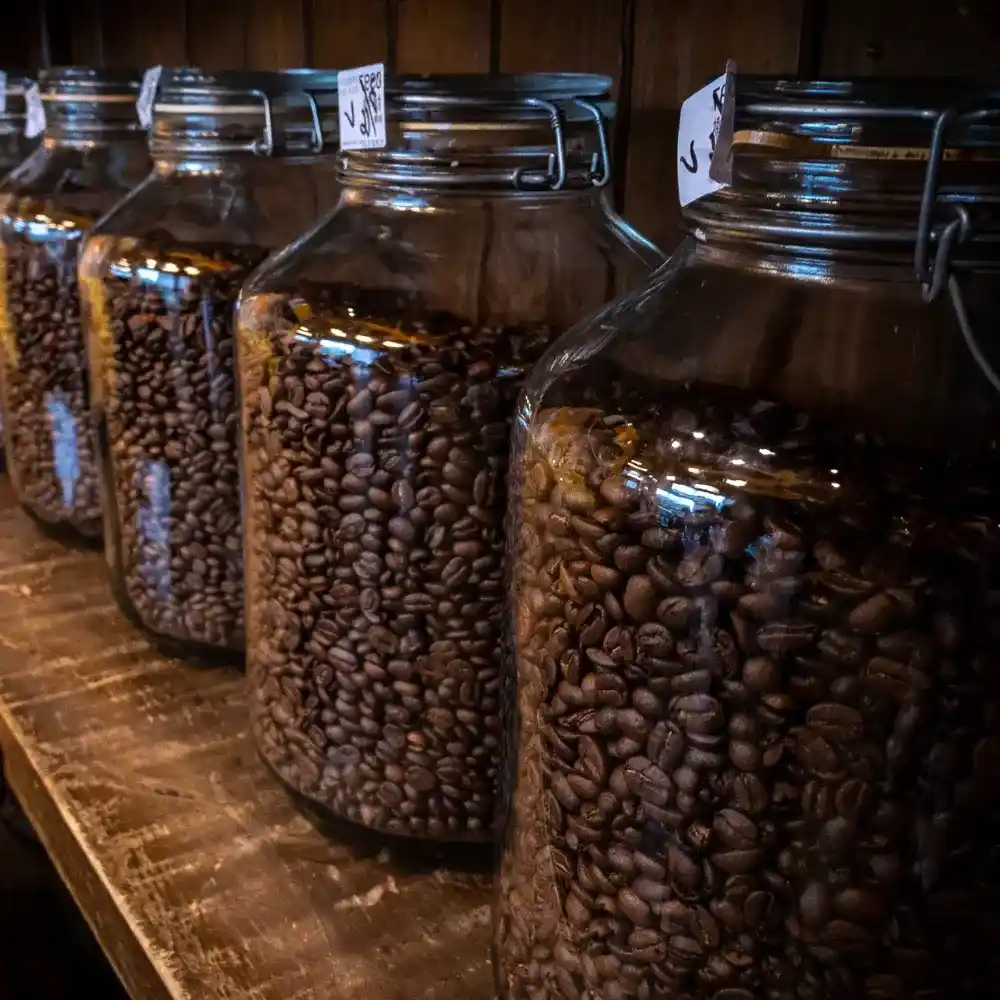
Aside from choosing the right container, the storage conditions greatly influence the preservation of your beverage.
- Cool and Dry Environment: Coffee should be stored in a cool, dry place away from any sources of heat and moisture. Heat and moisture can cause your lovely drink to degrade faster, leading to a loss of flavor.
- Away from Odorous Items: Coffee can absorb odors from its surroundings. Therefore, it’s best to store it away from any strong-smelling items in your pantry.
The question of how to store coffee properly is often a determining factor in how well you can preserve the quality of your cup of joe. While storage conditions won’t affect the caffeine content of the beverage, they can significantly impact the freshness and flavor of your brew. Ensuring you store your coffee under optimal conditions will not only safeguard the caffeine punch but also enhance your overall experience.
Other Factors Influencing Caffeine Loss
There are other elements beyond coffee origin, brewing, and storage that can impact the caffeine content in your cup of joe. In this section, we’ll examine the effects of decaffeination, the difference between instant and freshly brewed coffee, and the impact of different brewing methods such as espresso and drip coffee on caffeine extraction.
Decaffeination Process and its Effects

The decaffeination process is designed to remove caffeine from the beans, with the intention of producing a brew that maintains most of the original flavors without the stimulating effects of caffeine.
- Decaffeinated Coffee: Despite the name, decaffeinated coffee is not completely devoid of caffeine, but it contains substantially less. Typically, decaffeinated coffee retains about 2-3% of the original caffeine content.
- Impact on Flavor: While the process aims to preserve flavor, some subtle changes may occur due to the removal of certain compounds during decaffeination. Sanka Coffee, one of the oldest decaf brands, is a classic example of the balance between removing caffeine while striving to maintain original flavors.
Instant Coffee vs. Fresh Brewed Coffee

The convenience of instant coffee comes with some trade-offs in terms of caffeine content and flavor.
- Instant Coffee: Instant coffee, often freeze-dried, tends to have less caffeine per serving compared to freshly brewed coffee. The caffeine content is lower primarily due to the difference in serving size and the concentration of the beverage.
- Flavor Differences: Instant coffee may not deliver the depth of flavor and aroma achieved by fresh brews. However, its ease of preparation and portability make it a popular choice for many.
Caffeine Extraction in Espresso vs. Drip Coffee
The method used to brew your cup of joe can also affect caffeine content, with differences notable between espresso and drip coffee.
- Espresso: Espresso shots are brewed by forcing hot water through finely-ground coffee under high pressure. While this method extracts a high concentration of caffeine, the serving size for espresso is quite small. Thus, a single shot of espresso may have less total caffeine than a cup of drip coffee.
- Drip Coffee: Drip coffee, brewed by allowing hot water to drip through medium-ground coffee, usually contains more caffeine in total due to the larger serving size, despite having a lower concentration of caffeine.
Understanding these factors can help coffee lovers make informed choices about their consumption, aligning it with their taste preferences and desired caffeine intake.
Debunking Common Caffeine Myths
In the world of this lovely beverage, there exist several myths and misconceptions, particularly surrounding caffeine content. Let’s take this opportunity to debunk some of the most prevalent myths associated with coffee and caffeine.
Does Coffee Caffeine Content Increase with Age?
A common misconception is that coffee becomes more caffeinated as it ages. This is not the case. While the flavors may change over time, the caffeine content remains stable. This applies to both whole beans and ground coffee. Even in the case of expired coffee grounds, the caffeine content will not increase or decrease over time.
The Effect of Adding Milk, Sugar, or Flavorings on Caffeine Levels

It’s also a widespread belief that adding milk, sugar, or other flavorings to coffee can alter its caffeine content. However, this is not accurate. While these additions can significantly change the taste and texture of your cup of joe, they have no impact on the caffeine levels. Any perceived change in the ‘strength’ or ‘potency’ of the drink is likely related to the taste rather than the actual caffeine content.
Do Coffee Substitutes Contain Caffeine?
Coffee substitutes, such as herbal coffee or grain coffee, are often touted as caffeine-free alternatives. While it’s true that these substitutes generally contain no caffeine, there are exceptions. Some substitutes, like those made from the guarana plant or yerba mate, do contain caffeine. Therefore, it’s always a good idea to check the ingredients and nutritional information when choosing a coffee substitute.
Understanding the realities behind these common myths can help coffee enthusiasts better appreciate their beverage of choice and make more informed decisions about their caffeine consumption.
Conclusion
In conclusion, when examining the question “Does coffee lose caffeine over time?”, it’s clear that the journey of caffeine from bean to cup is far more intricate than one might initially presume. The caffeine content in your beverage is influenced by a multitude of factors—origin and type of the bean, roasting levels, grinding methods, brewing techniques, storage conditions, and the form in which this delightful drink is consumed—all playing a part in this complex ballet of chemistry.
However, the consistent truth amidst all these variables is that the caffeine content in coffee, whether whole beans, ground, or in a brewed cup, remains relatively stable over time. Changes in flavor and aroma, often mistaken for changes in ‘strength’ or caffeine content, are more subject to the whims of time and conditions. The next time you savor a cup of joe, remember that you’re not just enjoying a beverage, but participating in a global dance of agriculture, science, tradition, and taste. So, enjoy your lovely beverage, knowing that its caffeine content will stand the test of time.
FAQ
Is caffeine content in coffee stable?
Indeed, the caffeine content in this beverage is stable, remaining consistent over time. This means that even as the coffee ages or changes in flavor, the caffeine it contains when first roasted stays relatively the same.
How does coffee bean origin affect caffeine levels?
The origin of the bean has a significant impact on its caffeine levels, largely due to the inherent differences in coffee species. Different varieties of beans, such as Arabica or Robusta, inherently contain varying amounts of caffeine, with Robusta generally containing almost double the caffeine of Arabica.
Does freezing coffee preserve its caffeine content?
Yes, freezing coffee can help preserve its caffeine content. While it may slightly alter the flavor profile due to changes in moisture content and the crystallization process, the actual caffeine level remains unaffected.
Can caffeine be completely removed from coffee?
Technically, it's impossible to completely remove all caffeine from coffee. The decaffeination process can remove most of it, but decaffeinated coffee typically still contains about 2-3% of the original caffeine content.





